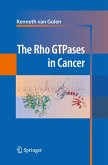On being asked to write a book on migration and homing in animals, intended as an introductory text to inform and stimulate both students and non-specialists, I saw the following alternatives for an outline: (1) I could discuss known or hypothetical mechanisms of orientation, and enumerate animals known or thought to use these mechanisms in migration and homing. (2) I could discuss the known feats of orientation by animals under field observation (e. g. migration), following some practic able order, with a subsequent discussion of the attempts at and possible success in elucidating the basic mechanisms of orientation. Both alternatives have obvious disadvantages. (1) would suffer from the fact (a) that very few orientation mechanisms (such as the sun, star, or magnetic compass) have been firmly established and (b) that for many animals the modes of orienta tion are unknown; therefore, for many animals whose consider able feats of orientation are well known, an appropriate alloca tion could not be made. With (2) the disadvantage is that due to the complexity of animal movements, it is difficult to find some relevant order and that in many animal groups discussions of certain known mechanisms such as the sun com pass would recur. I have selected outline (2) as the much lesser evil. The discussion pursues a compromise between taxonomic order and similarity in feats of orientation or methodological approaches chosen by the various investigators.








